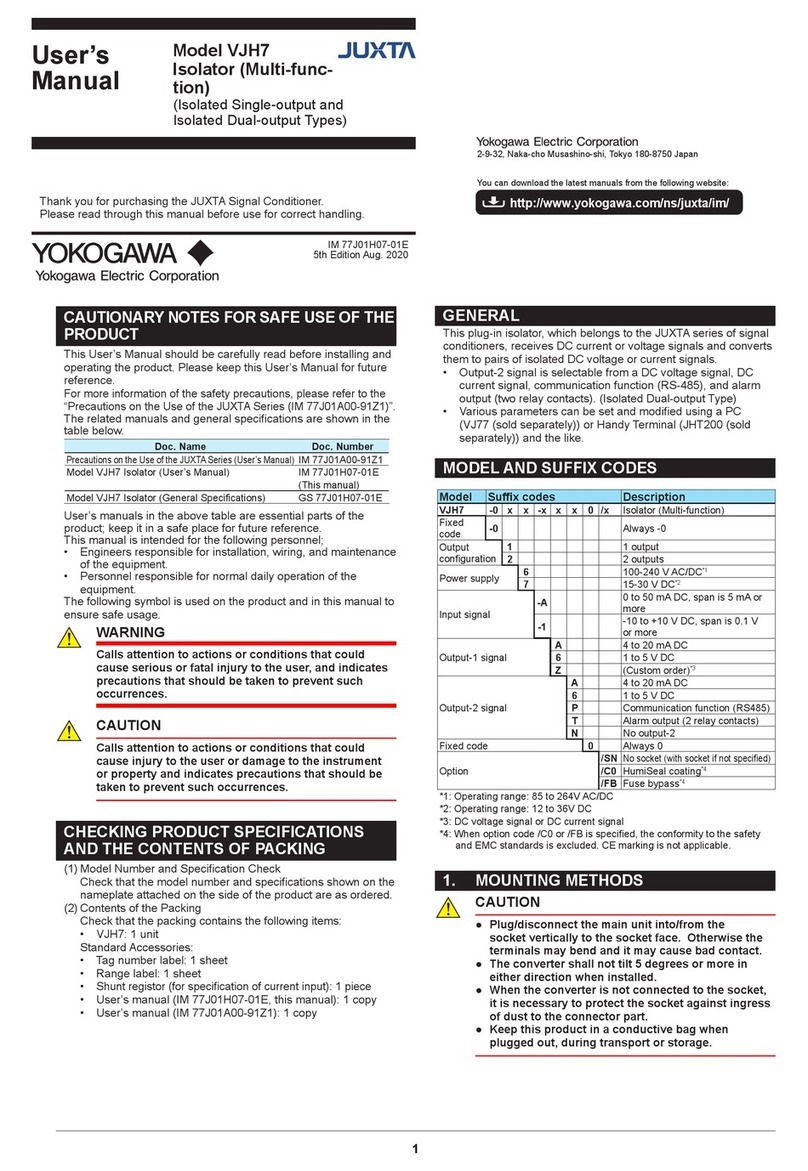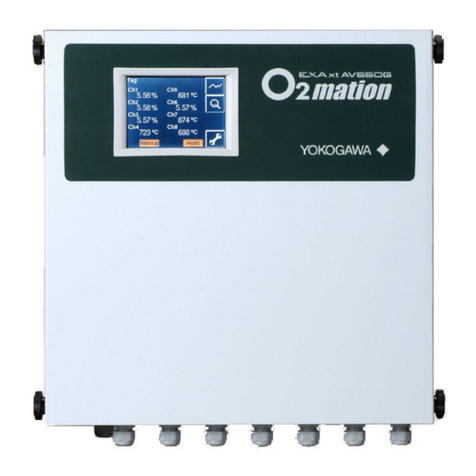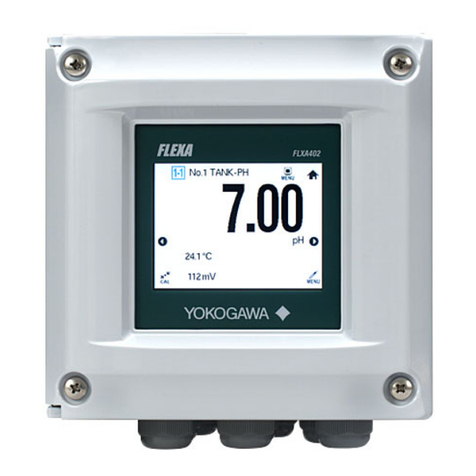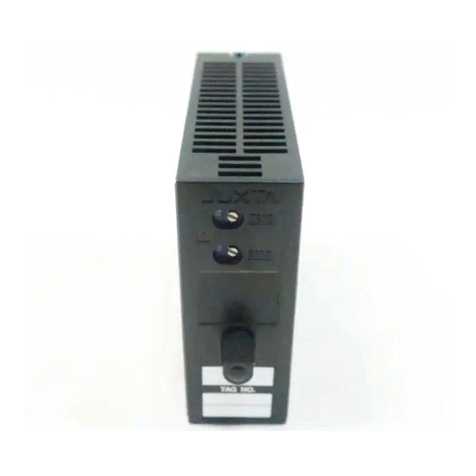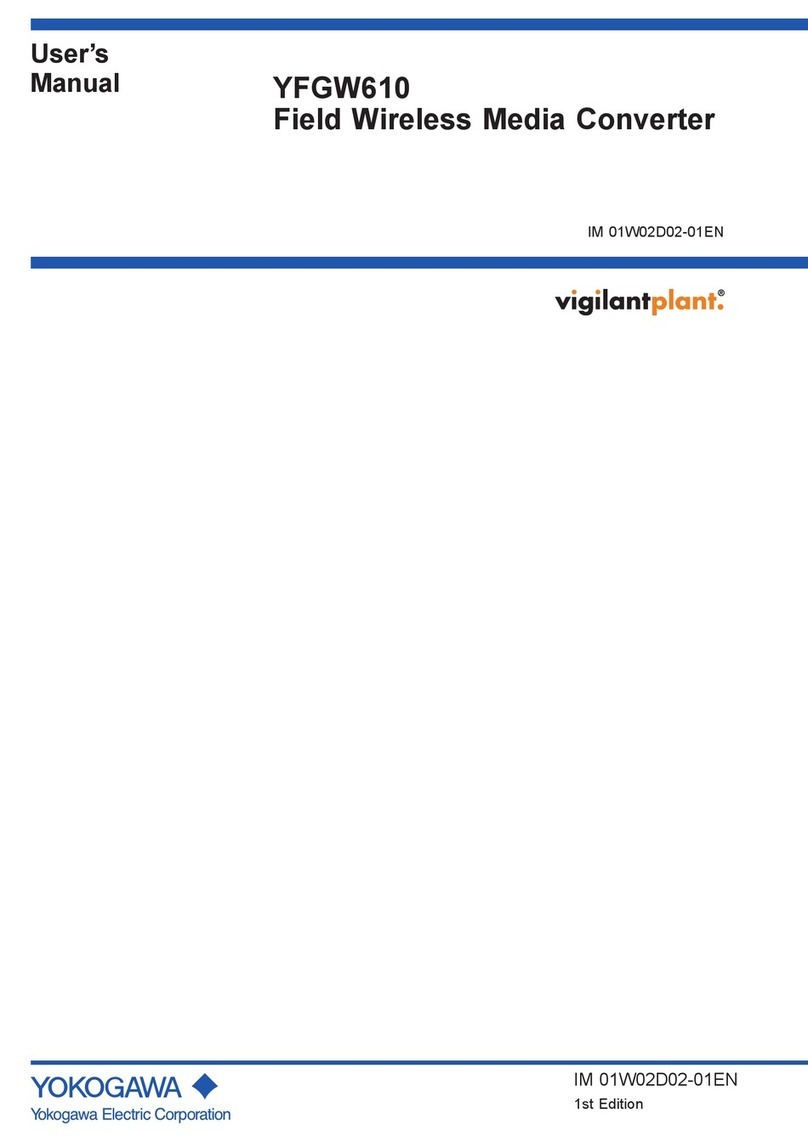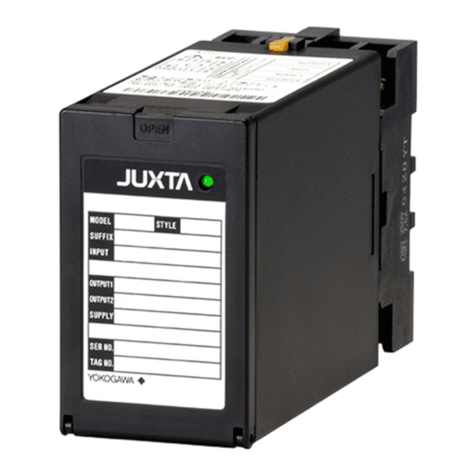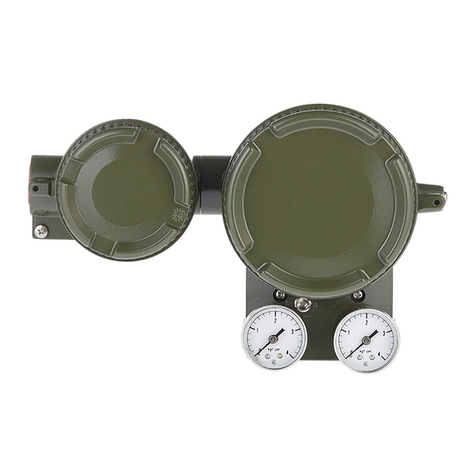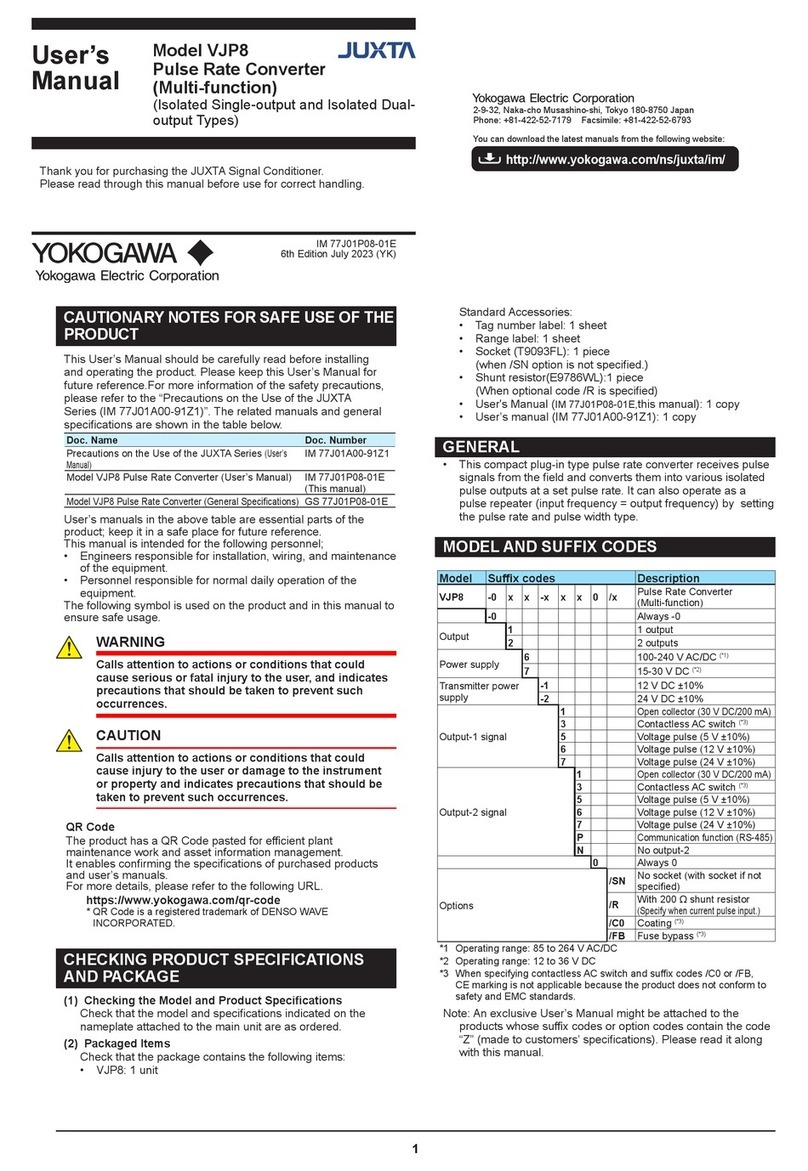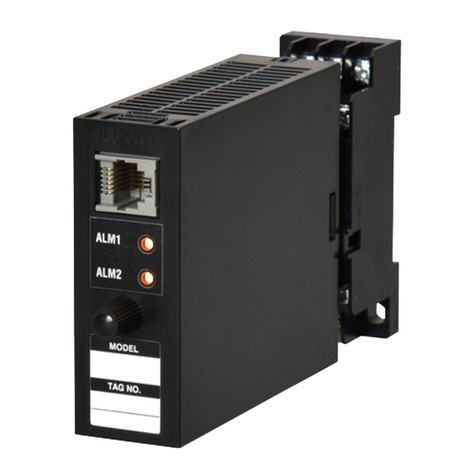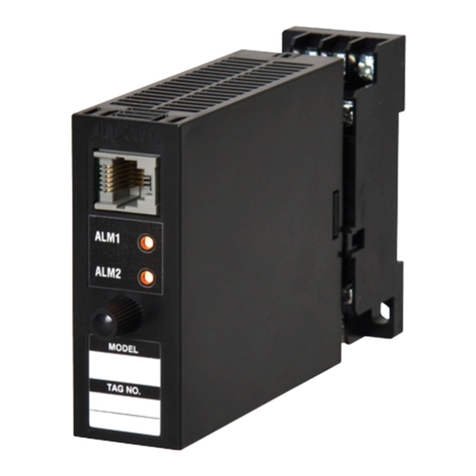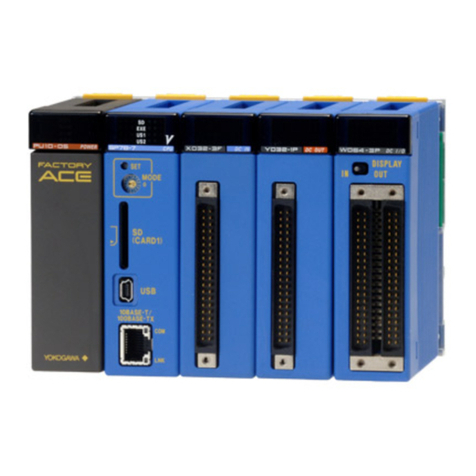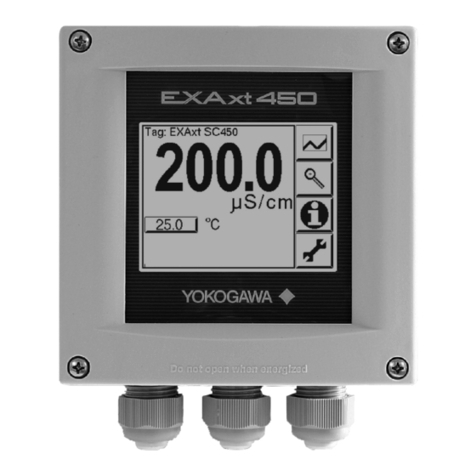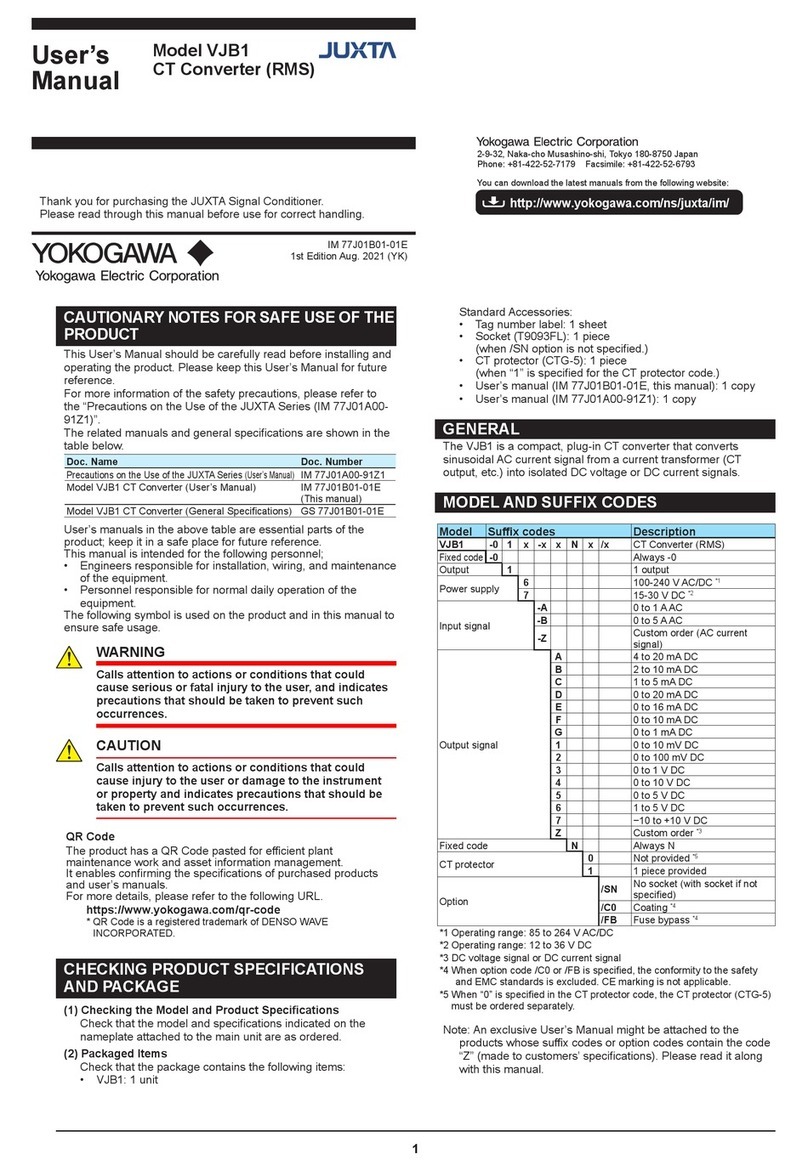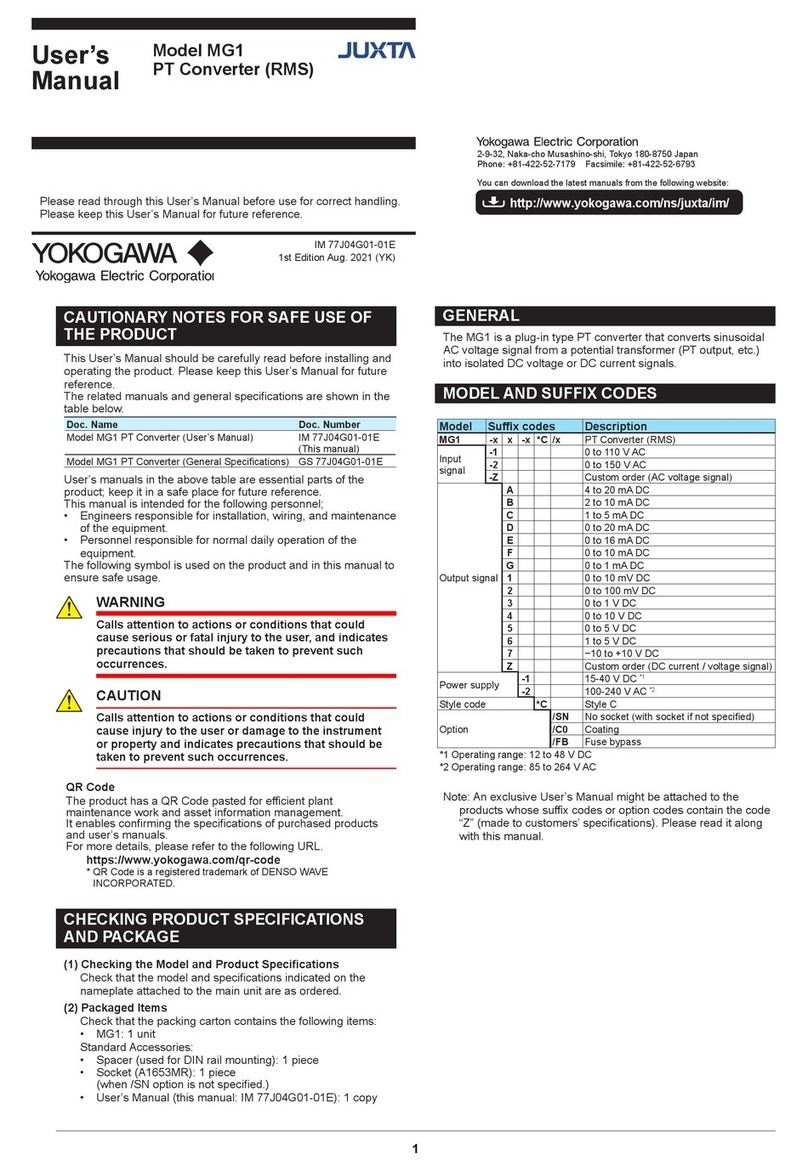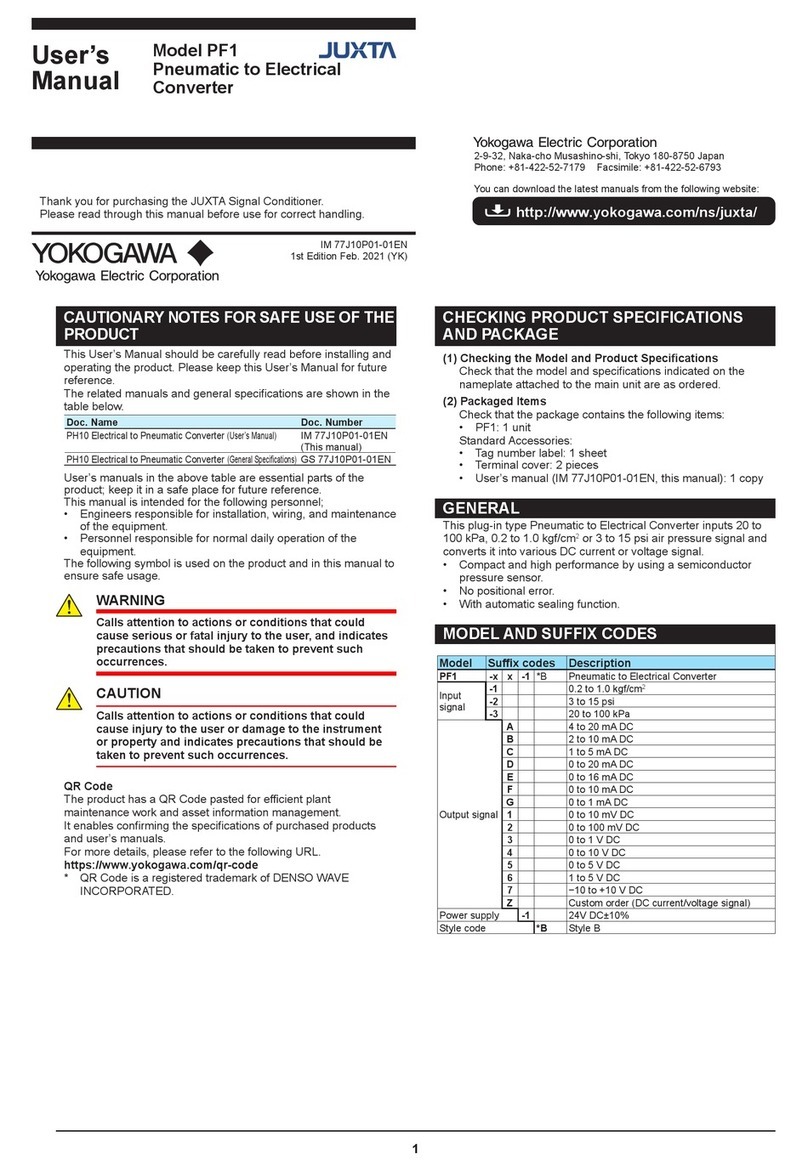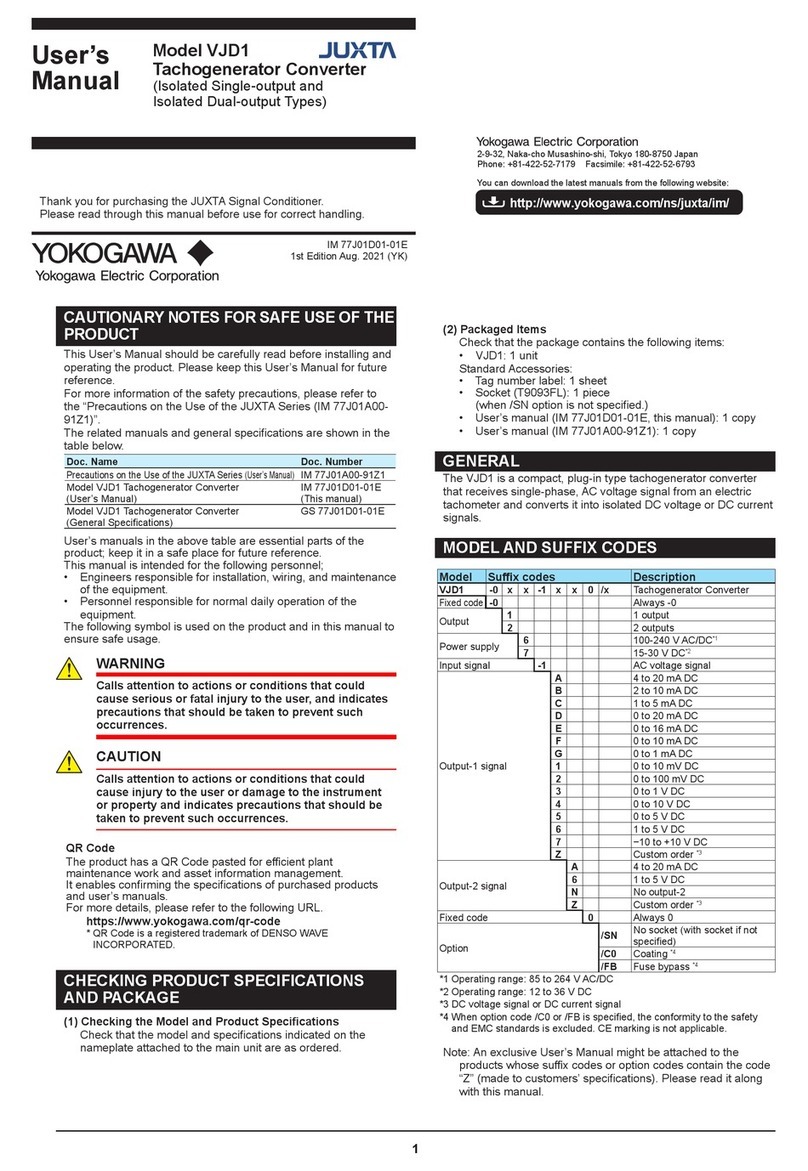
6. COMPUTING FUNCTION
6.1 VJX7-A (Free Program)
This computing unit is used to meet individual applications
by programming the available commands using a PC (PC-
based Parameters Setting Tool) or the Handy Terminal. Set the
computing program in G01 to G59.
6.2 VJX7-B (Moving Average Computation)
This computing unit stores the input values sampled at intervals
of one-fortieth of the moving-average time (L) into 40 buffers
in order, and outputs the moving average of 40 input values
(Output-1= Y1, Output-2= Y2). The output between samplings
is smoothed out by interpolation. Minimum sampling time is the
computing period (100 ms). Therefore, when the moving-average
time is set shorter, the number of samplings is less than 40.
When using a rst-order lag lter for input (X), set the rst-order
lag time constant (T).
Set the moving-average time (L) at % value in [H02: CONST].
The value of 0.0 to 100.0% corresponds to that of 0 to 1000
seconds. For example, enter “6” to set in H02 when setting 60
seconds.
• Setting range of moving-average time:
0 to 320,000 seconds (about 3.7 days) with 4 signicant digits
Minimum unit is 1 second (however, 0.1 second is possible for
4 seconds or shorter).
(e.g. 12345% is impossible, 12340% is possible.)
First-order lag time constant (T) is set at % value in [H01:
CONST]. The value of 0 to 100% corresponds to that of 0 to 100
seconds.
• Setting range of time constant:
0 to 799.0 seconds; minimum unit is 0.1 second.
• Accuracy of moving average and time constant setting:
(±5.0% of set value) ± 1 second
e.g.
X
40
X
39
X
38
X
37
X
36
X
35
X
5
X
4
X
3
X
2
X
1
Moving average=
Computation time
Time
X1+X2+ • • • • • X40
40 (Note)
Note: For the moving average times at 1, 2 and 3
second, the number of samplings is 10, 20 and
30, respectively (when the computing period is
100 ms).
6.3 VJX7-C (Dead Time Computation)
This computing unit stores the input values (X) sampled at
intervals of one-fortieth of the dead time (L) into 40 buffers in
order and outputs data (output-1=Y1, Output-2= Y2) after the
dead time has elapsed. Minimum sampling time is the set
computing period. Therefore, when the dead time is set shorter,
the number of samplings is less than 40. However, for the dead
times of 3, 2 and 1 second, the number of samplings is 30, 20,
and 10, respectively (when the computing period is 100ms).
The output between samplings is smoothed out by interpolation.
When using a rst-order lag lter for input (X), set the rst-order
lag time constant (T). Set the dead time (L) at % value in [H02:
CONST]. The value of 0.0 to 100.0% corresponds to that of 0 to
1000 seconds. For example, enter “6” to set in H02 when setting
60 seconds.
• Setting range of dead time:
0 to 320,000 seconds (about 3.7 days) with 4 signicant digits
Minimum unit is 1 second (however, 0.1 second is possible for
4 seconds or shorter).
(e.g. 12345% is impossible, 12340% is possible.)
First-order lag time constant (T) is set at % value in [H01:
CONST]. The value of 0 to 100% corresponds to that of 0 to 100
seconds.
• Setting range of time constant:
0.0 to 799.0 seconds; minimum unit is 0.1 second.
• Accuracy of dead time and time constant setting:
(±5.0% of set value) ± 1 second
e.g. 0% → 100% step input
6.4 VJX7-D (First-order Lag Computation)
This computing unit provides a rst-order lag computation on
input (X) with a time constant (T) and outputs the result (output-
1=Y1, output-2=Y2). Set the time constant (T) at % value in [H01:
CONST]. The value of 0 to 100% corresponds to that of 0 to 100
seconds.
• Setting range of time constant:
0 to 799.0 seconds; minimum unit is 0.1 second.
• Accuracy of time constant setting:
(±5.0% of set value) ± 1 second
e.g. 0% → 100% step input
Input 0%
63.2%
100%
100%
Output 0%
T
6.5 VJX7-E (First-order Lead Computation)
This computing unit provides a rst-order lead computation on
input (X) with a time constant (T) and outputs the result (output-
1=Y1, output-2=Y2). Set the time constant (T) at % value in [H01:
CONST]. The value of 0 to 100% corresponds to that of 0 to 100
seconds.
• Setting range of time constant:
0 to 799.0 seconds; minimum unit is 0.1 second.
• Accuracy of time constant setting:
(±5.0% of set value) ± 1 second
e.g. 0% → 50% step input
Input 0%
68.4%
50%
100%
50%
Output 0%
T
6.6 VJX7-F (Velocity Limiter)
This computing unit limit the input (X) velocity at the ascending
velocity limit for a positive change and the descending velocity
limit for a negative change, and outputs the limited value (output-
1=Y1, output-2=Y2). When the input velocity (slope) is no more
than the limit value, the unit outputs the input as is.
Set the ascending velocity limit at % value in [H01:CONST], and
the descending velocity limit at % value in [H02:CONST]. The value
of 0.0 to 100.0% corresponds to that of 0.0 to 100.0%/minute.
• Setting range of velocity limit value:
0.1% to 699.9%/minute; minimum unit is 0.1%/minute.
Setting the limit at 700.0%/minute or above does not limit the
input, so the unit simply outputs the input as is (i.e., works as
an open limit function).
• Accuracy of velocity limit setting:
(±5.0% of set value) ± 1 %/minute
e.g. 0% → 100% → 0% step input
Input 0%
100%
100%
Output 0%
Ascending velocity limit
(%/minute)
Descending velocity limit
(%/minute)
6.7 VJX7-G (Limiter)
This computing unit serves as an ordinary converter as long as
the input (X) is within the upper and lower limits. When the input
exceeds the limit, the unit outputs the signal that corresponds to
the limit value (output-1=Y1, output-2=Y2).
Set the upper limit at % value in [H01:CONST], and the lower
limit at % value in [H02:CONST].
• Setting range of upper and lower limit value:
-6.00 to 106.00%; minimum unit is 0.01%.
4IM 77J01X07-01E 4th Edition Feb.20. 2017-00
